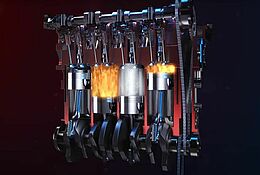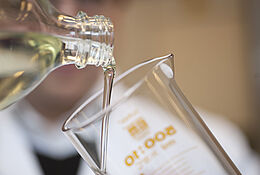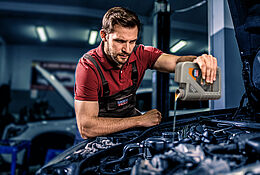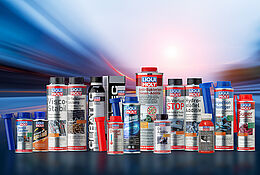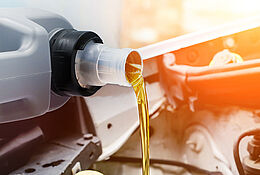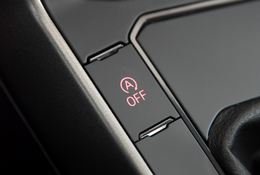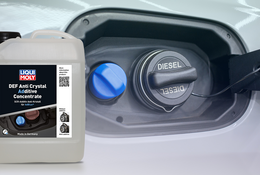- 8min
Tips and tricks for before and after the car wash

Dead insects, bird droppings or dust – vehicles quickly become dirty in summer. But that doesn’t mean that car washing is more important in the warm season than in winter. The vehicle should also be cared for conscientiously in the cold months. Salt on the road and dirt accumulating mainly under the vehicle are just two of the main problems.
Whether you drive into the car wash facility or self-service wash box every week or only when you can hardly see through the windscreen because of all the insect remains: regardless of the season and your personal washing behavior, there are some tips and tricks to consider before and after every car cleaning session.
Why you should wash your car at all
Regular care and cleaning of the vehicle makes sense. This is for visual reasons, to prevent depreciation, and for safety reasons, for example if lighting or visibility is restricted. Especially because, according to the road traffic regulations, the lighting equipment must not be dirty or soiled.
If droppings and insects remain on the body, they will permanently damage the paintwork. The heat and sun in summer cause bird droppings or insect remains to burn into the paint.
In winter, salt on the road accelerates the formation of rust. The underbody in particular is affected. In winter, don’t forget to wash the underbody to rinse off the salt, and consider having professional corrosion protection applied. But be careful: car washing in winter is not always good for the car! If the thermometer indicates minus ten degrees or colder, driving through the car wash is not recommended. The reason for this is that the water in a car wash is 10 to 30 degrees warm. If this hits a car that was exposed to the cold just before, it can cause a “heat shock”. Because paint, rubber and plastic parts are sensitive to extreme temperature fluctuations and can be damaged as a result.
Remove stubborn insect residues before car washing
When driving, insects almost never fail to stick to the windshield, the paint, the radiator grille or other parts of the bodywork. That doesn’t just look bad. The residues can turn out to be real paint killers. This is because a mixture of chitin, secretions and acids is released when the insects are squashed in a collision with a vehicle. And this mixture attacks the paint. Insect remains can also obstruct visibility.
That means: this contamination should be removed as quickly as possible. However, simply driving through the car wash or cleaning the car in the self-service wash box is often not sufficient with such residues. This is where our Insect Remover comes in. It softens dirt quickly and gently, making it easy to lift off. The gel-like agent adheres well to the vehicle due to its wetting effect and does not simply flow away. Insect Remover and the matching Insect Removal Sponge can be used to remove corresponding residues from car windows, chrome parts, headlights and paint surfaces. This makes it perfect for pretreating all plastic, paint and chrome surfaces on cars, commercial vehicles and motorcycles before driving through the car wash.
Do you need a prewash before the automatic car wash or self-service box?
A prewash makes sense. This is because it removes coarse, stubborn dirt particles that cannot be removed in the car wash tunnel or self-service wash box and can otherwise eat into the paintwork. In addition, this coarse dirt on the paint can be dissolved by the prewash, which would otherwise act like fine emery paper on the body, especially in the car washing system with the large brushes. Our Car Wash Shampoo is ideal for this. With its high washing and cleaning effect, it removes muck, dust and all oily and greasy dirt. The prewash is often part of the journey through the car wash.
Streak-free view after the car wash
Your freshly cleaned car is then back on the road. However, when the windscreen wipers are used for the first time, streaks may appear on the windshield. This is due to the wax sealant that was applied to your vehicle in the car wash, for example. With our Windshield Foam Cleaner, you can remove the wax from the windscreen easily and streak-free after a car wash.
And not only that. Thanks to its highly effective foam, it dissolves and removes silicone, nicotine, insects as well as oily and greasy dirt. The cleaner is suitable for interior and exterior cleaning of vehicle windows.
Tire finish after the car wash
Could the sidewalls of your tires shine even more for the final finishing touch after the car wash? No problem. Maintain and clean your tires in one go with our Tire Bright Foam. Enhances the appearance of weathered tire walls and gives them suppleness and their original appearance back again.
Preserving the cleaning result
After the wash is before the next wash. It is therefore important to preserve the result. After all, car washing should pay off in the longer term. How do you do that? One possibility: Once the journey through the car wash or the cleaning in the self-service wash box is complete, simply apply our Waterless Detailer.
This is a gloss sealer that easily removes light residues, such as dust or water stains after the car wash, and gives the paint a radiant, deep gloss. The spray seals smooth paintwork over several weeks and offers an excellent water-beading effect and long-lasting protection against aggressive environmental influences as well as insect residues. This makes it easier to treat the next time you wash the car.
Our Super Soft Microfiber Cloth is particularly suitable for wiping off the product after spraying and for drying the corresponding vehicle parts, as it has a high absorption capacity.



